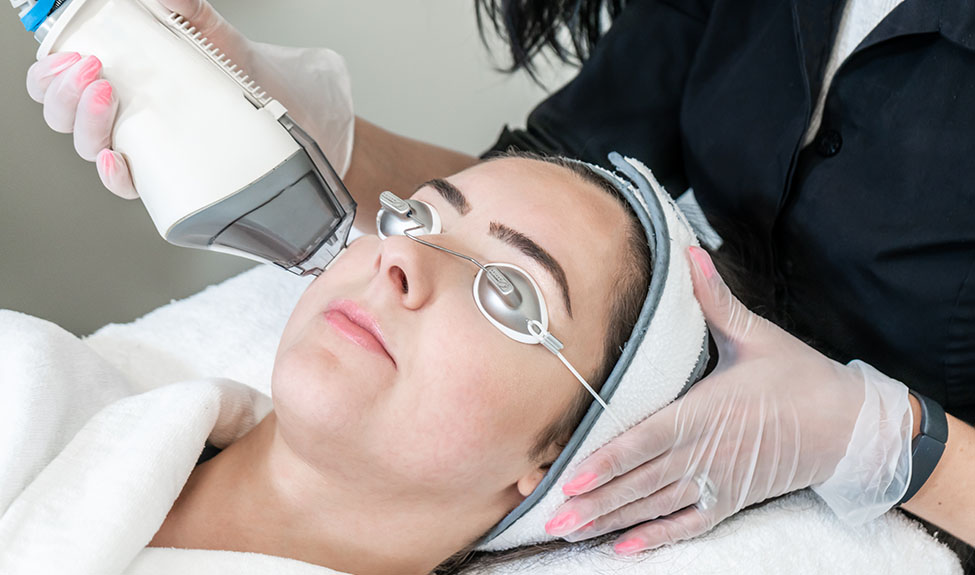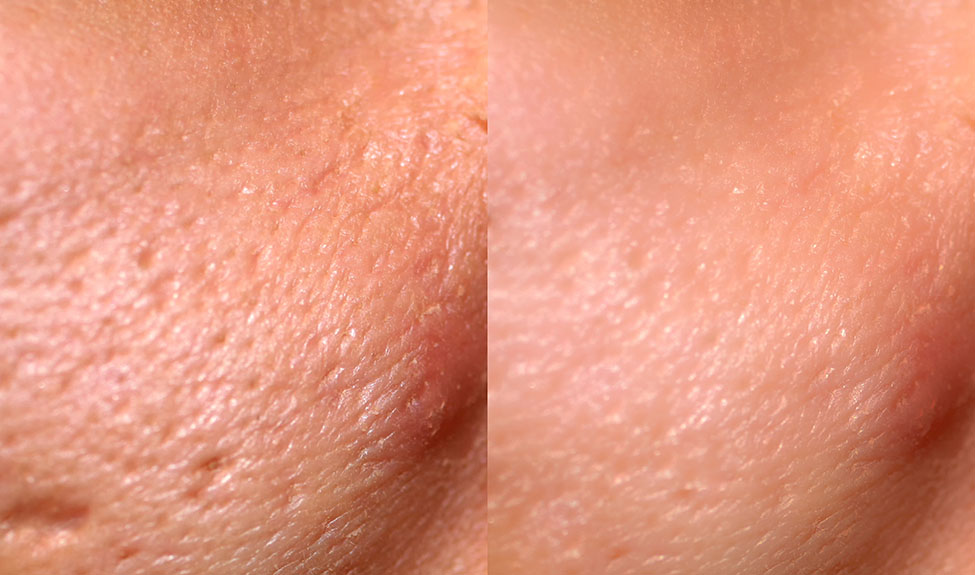As a professional esthetician, you can work with all ages and skin types. From mature skin aggressed by time and the environment to youthful skin plagued with acne, each client presents a unique challenge you must approach in a tailor-fitted way.
According to the American Academy of Dermatology Association (AADA), acne is the most common skin condition in the United States. It affects up to 50 million Americans each year, including about 85% of people between the ages of 12 and 24. Though teenagers are most commonly affected, acne can occur at any age and even those who have left their days of breakouts behind still carry scarring reminders.
Acne scars are typically not painful, but they can negatively affect an individual’s self-confidence. Skincare professionals work to not only improve the condition of the client’s skin, but to improve their confidence in themselves and their appearance.
When it comes to clients struggling with acne or acne scars, delicate treatment is required. Here are some tips to help you with the education and treatment of clients with acne scars.
Tips for Educating Your Clients
Your clients trust you to help address their skin concerns, whether it’s aging or acne. More than just administering treatments, however, it’s your job to educate the client. To not only help them understand their skin but also teach them how to properly care for it.
Clients with acne-prone skin may understand the basics about how acne forms, but it never hurts to provide a little refresher. Acne develops when bacteria, facial oils, and dead skin cells clog the pores, causing them to become inflamed. While acne most commonly affects teenagers, this problem can follow a person well into adulthood. As a skincare professional, you should be prepared to address the problem of acne and learn how to communicate with your clients about it.
It is important to teach your clients is that acne is not always the result of poor hygiene. Some skin types simply produce more oil than others which makes it difficult to keep the pores clear. Using the wrong skincare products or cleansing too often, stripping the skin of its natural oils, can contribute to the problem. Do your best to educate while keeping them comfortable and without passing judgment.
Once your client understands the underlying factors that contribute to acne, you can move forward in educating them about how to prevent and treat it.
Professional Treatments for Acne Scarring

Acne scars form when the skin suffers damage due to inflammation. Inflamed pores swell, causing the wall of the pore to breakdown and scar. In some cases, the skin heals quickly and doesn’t leave a mark. Severe acne can, however, cause damage to the surrounding tissues which results in scarring.
Treating acne scars can be difficult and, in some cases, at-home remedies simply aren’t targeted enough to achieve the desired effect. This is where a professional facial comes in.
Skincare professionals have access to products that contain a higher concentration of active ingredients than over-the-counter products. Benzoyl peroxide is a common active ingredient in acne treatments, for example, it helps unclog the pores and kills acne-causing bacteria which can lead to imbalances of the skin so its not advised. Salicylic acid is a beta-hydroxy acid (BHA) which acts as an exfoliant while alpha-hydroxy acids (AHAs) help reduce inflammation and stimulate skin repair and renewal.
Professional skincare treatments for acne often concentrate on exfoliation to clear the pores and help prevent future breakouts. Balancing oil production is essential as well. For clients concerned about acne scarring, more intensive treatments may be necessary.
Treatments that can help reduce acne scars include:
- Dermal fillers – Depressed acne scars can often be treated with dermal fillers. Certain fillers like hyaluronic acid promote collagen regrowth to improve the appearance of acne scars.
- Steroid injections – While fillers can help with depressed scars, raised scars are more likely to benefit from steroid injections. The steroids help break the bonds between collagen fibers under the skin, reducing the amount of scar tissue.
- Laser resurfacing – This treatment involves the use of a laser to deliver heat, stimulating the skin’s natural healing process. This process encourages the skin to produce new collagen which may improve the texture and appearance of the skin.
- Chemical Peels – Stronger than at-home exfoliants, chemical peels utilize high concentrations of chemical ingredients to remove the top layer of skin. By removing the top layer of skin, it allows healthier, smoother skin to grow in its place.
- Dermabrasion – Similar to chemical peels in that it is a form of exfoliation, dermabrasion involves using a special tool that removes the top layer of skin using friction. It effectively polishes away the top layer of skin to reveal smoother skin beneath.
- Microneedling – This treatment involves using a special tool to prick the skin, creating tiny wounds that stimulate collagen production. This treatment is most effective for depressed acne scars rather than raised scars.
It’s important your clients understand that a single professional treatment may not be enough to heal their acne scars. Repeated treatments are often necessary in combination with at-home maintenance. Instruct your clients to avoid squeezing or picking at breakouts – it will only make matters worse.
Be sure to recommend at-home products as well that can help with exfoliation and balancing oil production. A daily routine of cleansing, toning, exfoliating, and moisturizing will help your client on the path toward clearer, healthier skin.

